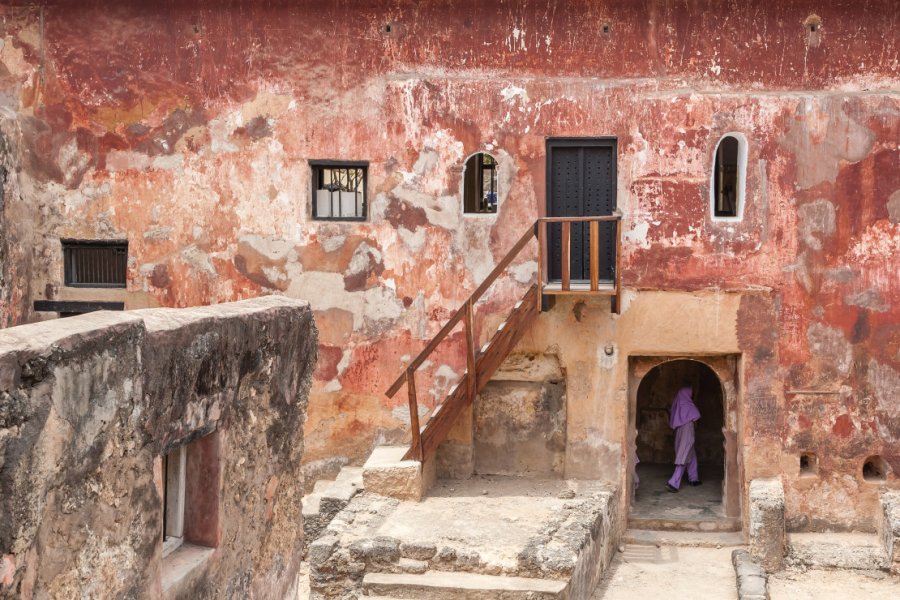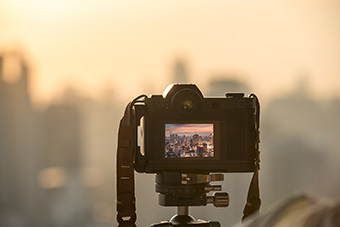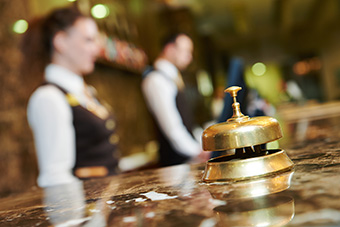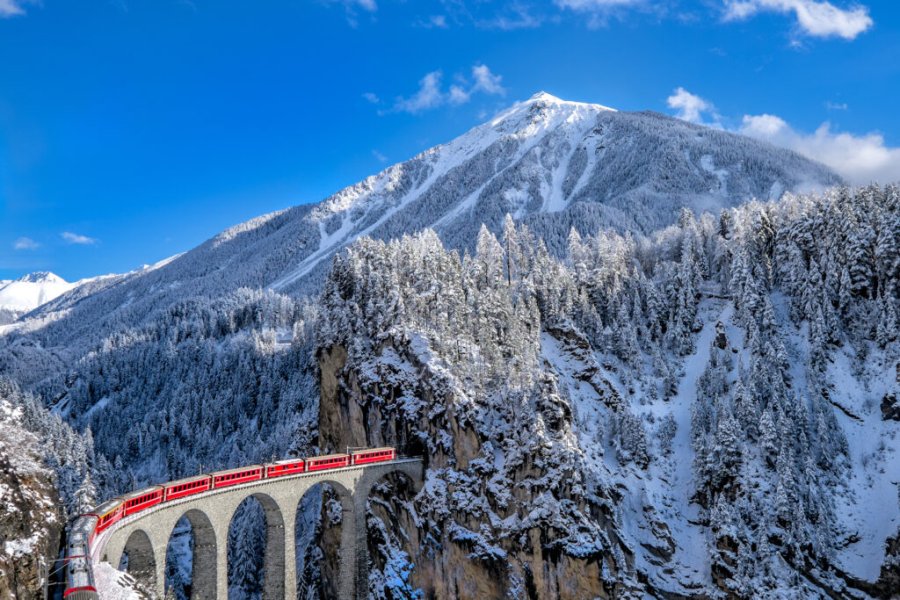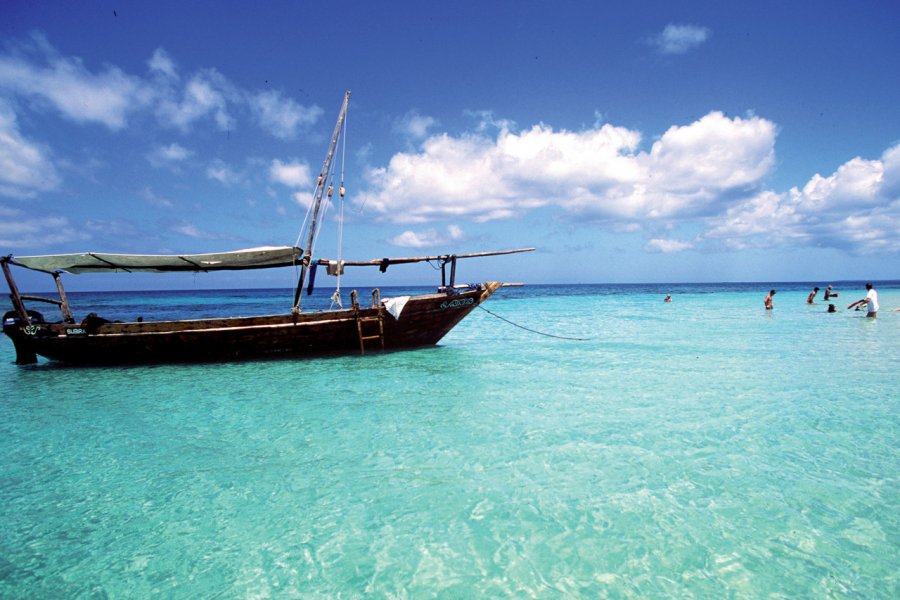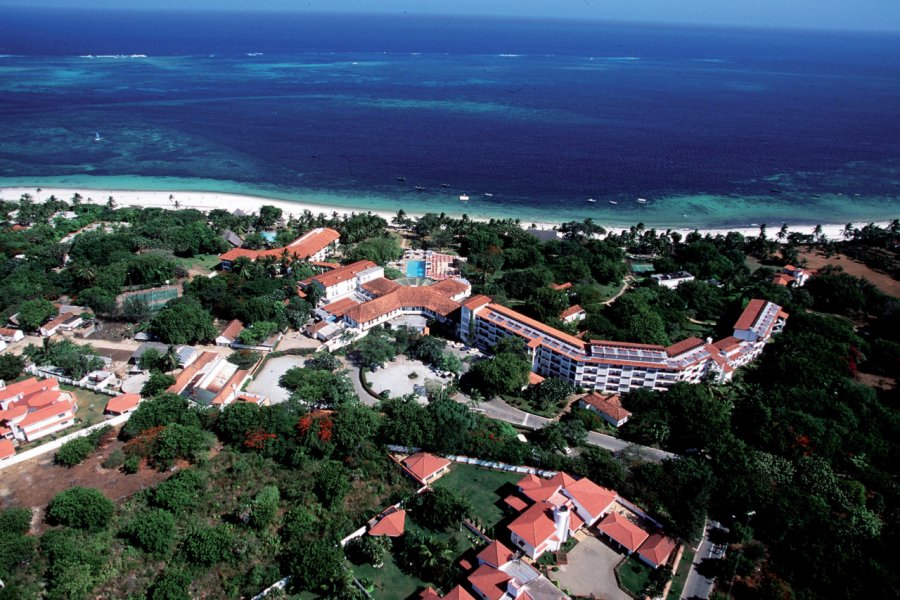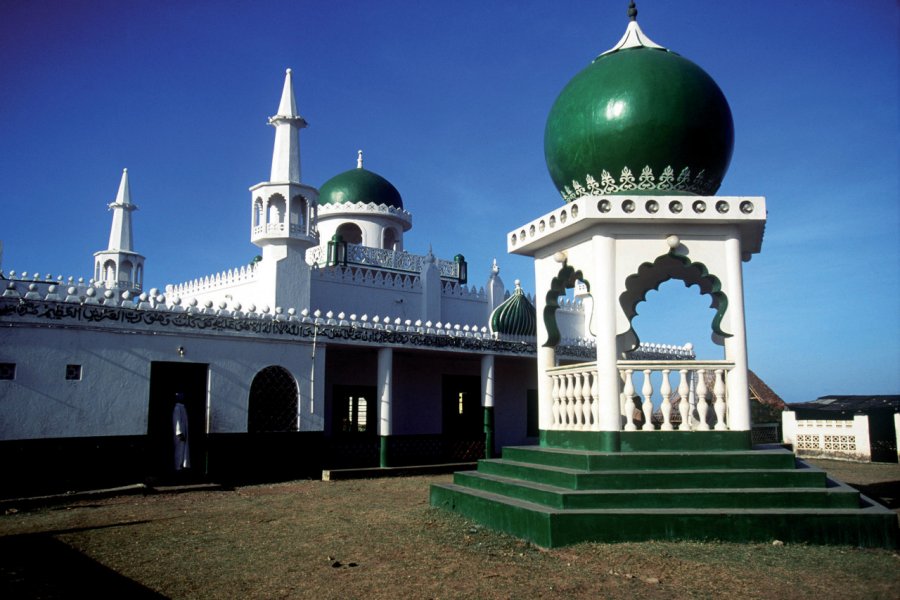Travel Guide Mombasa
In the south of Kenya, on the border with Tanzania, Mombasa is a port city built on an island in a gulf of the Indian Ocean. It is a destination that invites to nautical pleasures and gives access to the Tsavo national parks. The old town built around two streets keeps the memory of the colonial era, but is not much highlighted. Don't miss the Basheikh Mosque, a large white building with a Swahili style minaret, or Fort Jesus, built by the Portuguese at the end of the 17th century to protect the entrance to the port. This fort is listed by UNESCO as a world heritage site. While the old town is peaceful, the modern downtown area is noisy and lively. Mombasa is one of the gateways to the Tsavo National Park, the largest in the country where you can see elephants, hippos and crocodiles. This park is cut in two by the road and the railroad linking Mombasa to the capital. Also close to Mombasa is the Shimba Hills Game Reserve and Elephant Sanctuary, which you can explore with your tour guide on a mini-safari. Closer to the city, Haller Park near the northern beach promises great sightings. And when you've had your fill of wildlife images, there's still time to relax on the beach, dive, fish, sail or kitesurf. To bring back souvenirs you will be spoilt for choice: Kenyan handicrafts are varied and of high quality. If you haven't had a chance to bargain in the markets, you'll have a catch-up option at the edge of the Mombasa airport with about 20 craft stores. Take your tour guide with you!
What to visit Mombasa?
When to go to Mombasa?
The best periods to go to Kenya and to Mombasa in particular are January and February on the one hand, and August and September on the other. Specifically, the periods to avoid are those of the two rainy seasons. The main rainy season is in April and June, the short rainy season in November and December. Some tracks and even some paved roads are then difficult to use and make visits to the parks or villages uncertain. The wild animals are then difficult to observe.
Weather at the moment
Mombasa records higher average temperatures than Nairobi. While temperatures vary on average from 12 to 24°C in Nairobi, with an annual average of more than 20°C, Mombasa records temperatures ranging from 22 to 30°C, with an annual average of more than 25°C. If you go camping on the heights, be aware that the nights can be cold.
The local currency is the Kenyan shilling (Ksh), however hotels and local travel agencies also accept dollars and euros. Long reserved for wealthy tourists, Kenya has become more affordable, even if this destination is not the most economical on the market. However, safaris and luxury stays are always possible. Be aware that in off-peak periods, from April to June and in November, many hotels lower their prices. Tipping is mandatory.
European Union citizens must pay a tourist visa (€50) for a stay of less than three months. Note that the visa is free for children under 16 years old accompanied by their parents. Visas can be obtained at the Kenyan embassy in Paris, online on the eCitizen platform or on arrival at Nairobi or Mombasa airports.
The yellow fever vaccine is required to enter Kenya and a certificate may be requested from customs. Malaria is very present below 2,000 m altitude, i.e. in Mombasa. Running water is not drinkable in Kenya, drink only bottled or boiled water. And of course, protect yourself from the sun like mosquitoes.
Practical information
- When to travel?
- Weather forecast
- Budget
- Formalities
- Health
- How to travel by yourself?
- How to get organized?
- Getting around
Media
How to go to Mombasa? Our advice & tips
Safaris in Tsavo reserves are on the menu of all travel agencies. It is the means of transport that differs from one safari to another, in a 4x4, on foot, on horseback, on motorcycle or even in a hot air balloon. Accommodation during safaris is provided in campsites or even lodges in or near reserves. Many agencies offer trips combining safaris and beach breaks on the beaches of the Indian Ocean in Mombasa.
Discover our selection of travel agencies for this destinationThere are direct flights from Europe to Nairobi and Mombasa. The two cities are connected by several daily flights. The capital is 440 km from Mombasa by the A109 road, crossing through the Tsavo Natural Park. A railway also connects Nairobi and Mombasa. Please note that it is not allowed to enter national parks without a guide for safety and environmental protection reasons, so you will always have to go through a local agency, large or small. In solo, of course, you will be able to go further off the beaten track. Generally a safari organized for one or two people is much more expensive than a group safari.
Attention: in Kenya we drive on the left! It is easy to travel in the south of the country by public transport. Buses are generally reliable, comfortable and punctual. The road network is quite dense even if the roads are sometimes related to tracks, which is a problem in the rainy season. The train connects Mombasa and Nairobi. The two cities are also connected by air.
